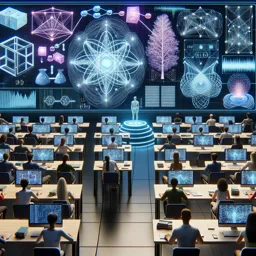Generative AI has emerged as one of the most revolutionary advancements within the field of Artificial Intelligence, blending technology and creativity in unprecedented ways. By leveraging sophisticated algorithms, generative AI systems can create original content that mimics or even surpasses human-created works, encompassing text, images, music, and more.
What Is Generative AI?
Generative AI refers to a class of artificial intelligence models capable of producing new, realistic outputs based on learned patterns from training data. Unlike traditional AI, which is typically designed for recognition or classification, generative AI crafts fresh material—from composing melodies to writing articles—often almost indistinguishable from human-made content.
How Does Generative AI Work?
The core of generative AI often uses neural networks—particularly types like Generative Adversarial Networks (GANs) or Variational Autoencoders (VAEs)—to generate data. These models are trained on large datasets and learn to understand the underlying structures and nuances. For example, a model trained on millions of photos can generate entirely new images that have never existed before but remain visually plausible and relevant.
Applications of Generative AI
- Content Creation: Automates the production of articles, marketing copy, code, or video scripts.
- Design and Art: Assists designers by generating creative artworks or mockups tailored to specific styles or themes.
- Music and Audio: Composes original music, audio effects, or voiceovers, enhancing the workflow for musicians and producers.
- Scientific Discovery: Accelerates research by suggesting molecular structures, simulating physical environments, or enhancing data analysis.
- Personalization: Powers the generation of custom recommendations, adaptive learning content, or individualized marketing strategies.
Benefits and Challenges
Generative AI holds vast promise:
- Efficiency: Speeds up content production and reduces manual labor.
- Creativity: Inspires novel ideas by enabling unique combinations and possibilities.
- Scalability: Allows organizations to automate large-scale, personalized productions.
Yet, challenges remain. The authenticity, copyright issues, and ethical considerations of AI-generated content spark ongoing debates. Ensuring that AI is used responsibly and creatively remains a priority for developers and businesses.
The Future of Generative AI
As generative AI evolves, we can expect even more realistic outputs and seamless integration with everyday technology. From interactive assistants to digital art studios, the ways generative AI shapes industries continue to expand. Those interested in Information Technology or Artificial Intelligence will find generative AI a vital area of growth—one that is actively redefining what’s possible with machines that not only compute, but also create.
Conclusion
Generative AI is transforming industries by blending technology with creativity, enabling scalable innovation and redefining the boundaries of what machines can achieve. Its future lies in responsible development and thoughtful application, ensuring that its benefits are maximized while challenges are effectively managed.

































